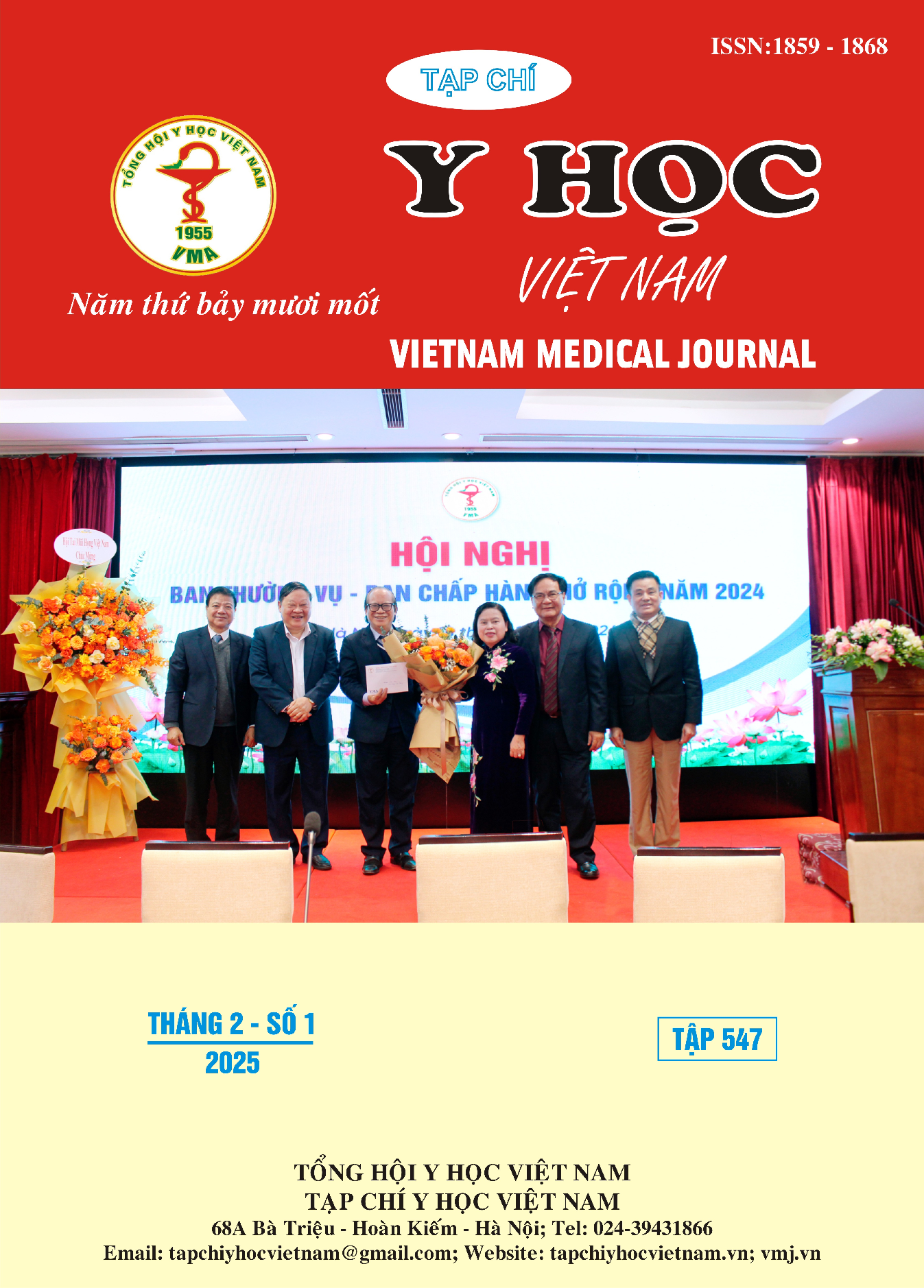A STUDY ON THE CLINICAL MANIFESTATIONS IN PATIENTS WITH CORNEO-CONJUNCTIVAL BURNS
Main Article Content
Abstract
Purpose: To investigate the clinical characteristics and factors affecting the severity of corneal burn patients treated at Ho Chi Minh City Eye Hospital. Methods: A cross-sectional descriptive study was conducted on 43 cases of eye burns, of which 61 damaged eyes were examined and treated at the Cornea Department and the Emergency Department of Ho Chi Minh City Eye Hospital from January 2024 to August 2024. Results: The average patient age was 43.19 ± 14.23 years, with a male-to-female ratio of 4.38:1. Manual labor occupations accounted for 81.40%. Work-related accidents made up 67.44%, while domestic accidents accounted for 32.56%. Of the cases, 90.70% had initial management, with 66.67% receiving appropriate first aid. Self-rinsing with available tap water was reported in 71.79% of cases. None of the patients wore protective eyewear. The ratio of alkali to acid agents was 3:1. For alkali burns, proper initial first aid helped reduce pH levels (p < 0.05). Patients presenting within 24 hours had better initial visual acuity (p < 0.05). Conjunctival epithelial injury was present in 65.57% of cases, with 87.50% affecting less than half of the conjunctiva area. Conjunctival edema was noted in 44.26% of cases. Limbal ischaemia occurred in 48.18% of cases, with 93.34% showing damage to six clock-hours or less. Injury sites were mainly inferior. Corneal epithelial damage was observed in 95.08% of cases, with 59.01% involving less than half of the corneal area. Corneal stromal edema affected 44.26% of cases. The main injury site for conjunctival-limbal damage was inferior, while central and inferior regions were the primary sites for corneal injuries. Intraocular pressure elevation occurred in 4.92%, and eyelid burns in 9.84%. The Roper-Hall grading system tended to yield a milder prognosis compared to the Dua grading system (p < 0.05). Factors associated with burn severity according to Roper-Hall included time to presentation, initial visual acuity, corneal epithelial damage, conjunctival epithelial damage, and eyelid burns. For the Dua grading system, factors included time to presentation, initial visual acuity, corneal epithelial damage, conjunctival edema, and eyelid burns. Conclusions: Corneal conjunctival burns are common in men of working age, the common agent is alkali, most cases have first aid at the scene, appropriate initial first aid helps reduce pH. Factors affecting the severity of burns are time of admission, visual acuity at admission, corneal epithelial damage, conjunctival epithelial damage, eyelid burns, and chemosis.
Article Details
Keywords
: eye burns, ocular burn, factors affecting prognosis.
References
2. Xie Y, Tan Y, Tang S. Epidemiology of 377 patients with chemical burns in Guangdong province. Burns. 2004;30(6):569-572.
3. Eröz P, Özer Ö, Güçlü ES, Baysal Z, Doğan L. Evaluation of Prognostic Factors in Adult Chemical Corneal Injury. Journal of Craniofacial Surgery. 2024:10.1097.
4. Wang F, Cheng J, Zhai H, Dong Y, Li H, Xie L. Correlation analysis of the clinical features and prognosis of acute ocular burns—exploration of a new classification scheme. Graefe's archive for clinical and experimental ophthalmology. 2020;258:147-155.
5. Lu Z, Chu T, Yang Z-H, et al. Epidemiological features and management of eye burn patients in Wuxi, China. BMJ Open Ophthalmology. 2023;8(1):e001171.
6. Allen NE, Crawford AZ, McGhee CN, Meyer JJ. Chemical eye injuries: a 10 year retrospective review of acute presentations and clinical outcomes in Auckland, New Zealand. Scientific reports. 2024;14(1):8264.
7. Ghosh S, Salvador-Culla B, Kotagiri A, et al. Acute chemical eye injury and limbal stem cell deficiency—a prospective study in the United Kingdom. Cornea. 2019;38(1):8-12.
8. Phan Thị Bảo V. Khảo sát đặc điểm tổn thương bề mặt nhãn cầu và thị lực ở bệnh nhân bỏng mắt do hóa chất. 2016;
9. Quesada JM-A, Lloves JM, Delgado DV. Ocular chemical burns in the workplace: Epidemiological characteristics. Burns. 2020;46(5):1212-1218.
10. Bizrah M, Yusuf A, Ahmad S. Adherence to treatment and follow-up in patients with severe chemical eye burns. Ophthalmology and therapy. 2019;8:251-259.


